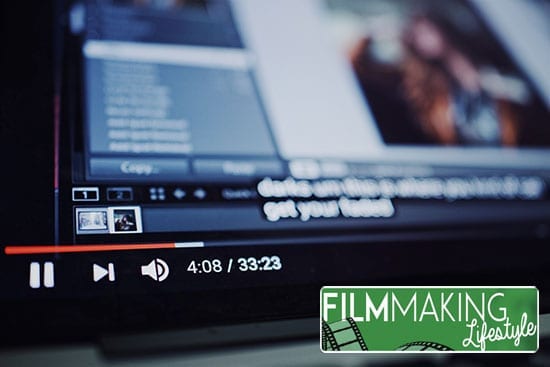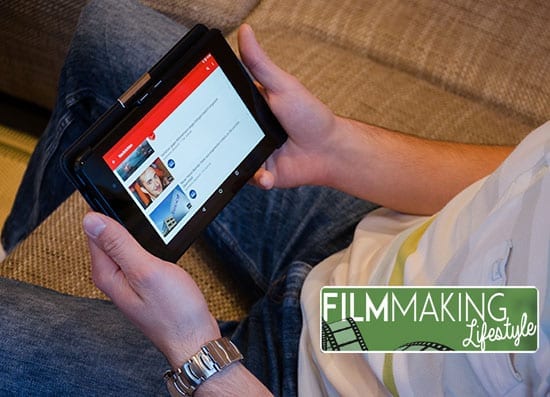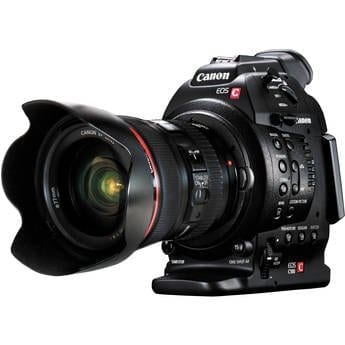We’ve got an article today by Amanda Smith, focusing on live streaming equipment. She covers what you need to live stream and goes over some pointers on what you should consider before getting into live streaming.
Streaming video connects you to an abundant gathering of people from all over the globe. A few online enterprises present to you impeccable live video streaming software that would aid anybody to stream video.
In spite of the fact that these businesses give you a chance to interact virtually with every other person, you should get hold of some live streaming equipment before you can commence your venture.
Or, on the other hand, there might be cases where you’ve not yet commenced your research, as you’ve most likely found and understood that choosing the proper gear can be tough and exhausting.
LIVE STREAMING EQUIPMENT
What Is Live Streaming?
Live streaming is a video stream of real-time video. It is also known as webcasting
Streaming can be used to transmit live audio and video over the internet by using software to encode the signal.
Live streams are usually delivered from a computer or other device that has been connected to an online service.
Here we will enter into a discussion where we will briefly describe the equipment you would need for an Amateur Live Stream, a Semi-Professional Live Stream, and finally a Professional Live Stream and a World Class one as well.
Best Equipment For Streaming
Here are some of the video streaming equipment required to get the best live streaming effect. We’ll be covering cameras and microphones, of course, but we’ll start off taking a look at computers.
Computer
Even if a tablet phone works fine most of the time, it is appreciated if you use a PC or a laptop with a fast processor. Video won’t lag as long, as the processor speed can keep up with the specifications of your camera.
It is suggested that you connect with the internet by means of a wired connection. Despite the fact that a wireless connection will work, a wired connection will give faster, higher-definition video recordings.
Video Camera
I’ve been researching the best video cameras for streaming and I found that there are many different options out there. As you know audio and video quality varies greatly depending on the equipment you have.
For quality video streaming you need to invest in a professional level video camera for your live production.
Video cameras range from professional level to relatively cheap, but they all have their pros and cons. Video camera quality cannot be underestimated.
camera microphones go live budget USB USB USB USB inputs record record record multiple features range create create create image image broadcast broadcast broadcast streamers streamers
One of the most important things you should consider when purchasing a camera is how often you’re going to be streaming and what your budget is.
You have a lot of choices in choosing a camera; what you select will depend on your content. In case it is simply you talking to a group of people, at that point it may not be crucial to get anything else besides a basic webcam.
However, if you’re broadcasting a huge occasion, it might be valuable to get the best professional camera. In case you get hold of one of the best cameras, make sure that your camera has a ‘Live’ mode so that you can use it as a webcam.
We give recommendations on video cameras a little later on in this guide.
Audio Streaming Setup
The sound equipment you utilize in your streaming setup depends on your content. Most cameras support pre-installed receivers, yet these are low quality and cannot get rid of the noise. Buy an external mic for impeccable recordings.
If you’re streaming a bigger event, it might be important to get condenser microphones, and in addition a sound mixer they can record into. You would then be able to take the output from the sound blender and put it straight into your PC.
Streaming Server
There are two routes for you to live stream your video content. You can utilize live streaming software, which will enable you to stream your content and will also include endorsements on your video.
The second is to set up your own particular server. This will require a dedicated server host, and in addition a PC that can be used as a server. This will ensure the most immaculate quality video and no advertisements yet is troublesome and expensive to set up.
Broadcaster software is definitely required so that the portal can be accessed from any place with a certain amount of payment per month. StreamNow is one such broadcaster software allowing smooth and continuous live streaming without any hindrance.
A subscription plan is enabled and premium videos can only be fancied post subscription. Users who are not enticed by the subscription plan can also seek assistance from the “Pay-Per-View” scheme. With safe and robust payment gateways StreamNow is one such broadcaster software that acknowledges sharing benefits between the user and the business software provider.
EaseUS RecExperts is a simple and intuitive Windows screen recorder to capture full screen and webcam for any occasion.
Live Streaming Equipment: Gear Guide
Beginner Streaming Equipment Setup
What would it take to get started in streaming? Just a camera and a computer with an internet connection? Wrong.
You will need the following:
-A fast, stable internet connection that can provide you with at least 5 megabytes per second upload bandwidth
-A good microphone. Never underrate the importance of a good microphone.
-An external webcam.
– A video capture card (if your PC doesn’t have one).
– A mixer (to combine audio from the mic and any other sources).
– An encoder (to encode video for streaming).
Here are our equipment recommendations for a beginner’s live stream.
Camera: Canon Vixia HF R700 is a great option if you are fresh to this business and it comes in at a very reasonable price point. Even at night, one can shoot a 1920*1080 pixel video with this by keeping it inside his pocket.
Tripod: Magnus VT-4000 is robust and long-lasting and can be used at any level. It has a fluid drag head which prevents any disruption to the video.
Switcher: Boxcast Switcher is a $300/year application which does not encourage the use of cables and lets you shoot multi-camera events with its live switching technology.
Microphone: Something like the Blue Yeti or the Behringer XM8500 is a good start. These are both quality microphones.
Intermediate Streaming Equipment Setup
Let us discuss the equipment required for a semi-professional’s live stream:
Camera: Canon XA35 is a solid option and is inclusive of certain features which you could have got only at twice the price. It has a 20x zoom lens and the HDMI and SDI outputs help it to work with other equipment. The 2X XLR inputs produce high-quality audio.
Tripod: Magnus VT-4000
Production Software: Wirecast, one of the best switcher apps in the market is labeled at $495. One can easily modify angles with the help of Wirecast and implement them into your stream.
Switcher Hardware: Roland V-1 HD is a famous consumer switcher used in multi-cam streaming of events. It has 4 HDMI inputs, an in-built sound mixer and offers professional features for producing an excellent live streaming experience.
Microphone: The Audio Technica AT2020 is one of our favorite all-around microphones for recording.
Advanced Streaming Equipment Setup
Let us discuss the equipment required for a professional live stream.
Camera: Panasonic AG-DVX200 is a brilliant camera for more experienced individuals looking to shoot 4K video. The integrated Leica Zoom lens helps to click wonderful images along with the HDMI connector providing 4K output.
For a more professional look, a Canon 5D mark III or a Canon C100 will do the job.
Tripod: Benro S7 Dual Stage Video Tripod is a great piece of kit and works best for outdoor events (as it’s incredibly robust). You might find this a more easy-to-use piece of kit than the Magnus VT-4000.
Software: Blackmagic ATEM 1 M/E 4K is famous for its sophisticated qualities. It is quite cost-effective and does not compromise when it comes to video quality.
Microphone: The Shure SM7B is a superior microphone that always places near the top on lists of professional microphones. Very competitive price point, too.
Live Streaming Equipment — Lighting
Let us discuss lights as well since it actually determines the quality of any stream.
Anybody commencing a live stream needs to think about lighting. There are a wide range of alternatives accessible to suit distinctive requirements.
Pro-lights can be costly, and aren’t generally important. Here we’ll go over a few alternatives for modest lighting for video and also more expert setups.
Lighting your recordings appropriately doesn’t require particular, costly lights and top-notch equipment.
Regularly, it just means exploiting the materials lying around. A seat can serve as a stand.
A mirror can be utilized as a reflector. A pile of books can get your camera to the correct height.
Whatever you’re recording video for, there is one fundamental lighting setup that is utilized in video production significantly more than other techniques.
This is the easiest, capable, powerful 3-light setup. Here is the manner by which it works.
Each of your lights will suffice a particular need. The first light is the most essential. This will illuminate the content of the individual you are recording. This needs to be at eye level, and must be put somewhat off to the other side.
The second light you will require is the filler.
This one shouldn’t be expected to be as capable as the fundamental illumination, but its only intention is to fill in the shadows cast by the key, giving a more normal look to your face.
It must even make any shadows cast on the backdrop less noticeable.
The third light in this plan is the backlight, which enables the subject to ‘stand out’ of the background by upgrading the presence of depth inside the frame.
This needs to be set to the side of or marginally behind your subject, off to the side, and somewhat lifted so the light is coming somewhat downwards.
How Do I Set Up Live Streaming?
Streaming is an exciting new way to reach audiences all over the world.
With streaming, you can share your message and give people a chance to connect with you in ways they never could before.
But even if you’re eager to start making videos, it can be hard to get started without the right equipment setup.
Audio Equipment
Streaming not only provides an easy way to view anything you want from your own device but also can provide a lucrative career path in some cases.
The audio equipment needed for streaming varies depending on what kind of streamer you are looking for.
For a live-streamer such as myself, I recommend using a microphone that is high quality enough so that my voice will come through clearly when I’m talking into it during my broadcast sessions or while playing video games with friends online (I use the Blue Yeti mic, primarily).
You’ll also need a good audio mixer. An audio mixer is responsible for combining, recording and mixing audio signals to produce soundtracks in movies, television shows, video games and other forms of media.
They work with professional video cameras as well as computer-based digital audio equipment and audio sources like a built-in microphone.
Mixing Equipment
The best mixing equipment for streaming is an external sound card and a mixer.
This will ensure you have the necessary inputs, outputs, and controls to provide your listeners with the highest quality audio possible.
Typically, the most popular USB sound cards are made by Creative Labs or M-Audio while Behringer has a great selection of mixers to choose from as well.
Encoders
The encoder is a device that converts analog signal into digital.
The word encoder is derived from the term “encoding”, which means to convert or translate a message into machine-readable code.
An encoding scheme specifies how data will be represented using binary digits, called “bits”.
The most popular type of encoders are video stream encoders which are used for streaming live videos over the internet.
Video encoders use different standard compression algorithms such as H264 and VP8 to compress video streams while also reducing bandwidth usage at the same time.
Hardware Encoders
Hardware encoders are the most common type of hardware for streaming. They work by encoding a video signal into a data stream that can be transmitted over networks.
This process is done in real time and doesn’t require any post-production or editing.
The encoded output from these devices can then go straight to a computer’s web browser, mobile device, or set-top box without needing additional processing.
The main advantage of using hardware encoders is that they’re simple to use and don’t require software installation on your computer like some other types of streaming devices do.
Another major benefit is that it offers an easy way to encode multiple streams at once which saves you tons of time when trying to manage all your content online!
Software Encoders
Software encoders are devices that take video and audio signals from a computer or any other source, encode them into the proper format, and send them out to be streamed online.
The process of encoding is very important because not all formats can be streamed online.
A software encoder takes whatever signal it receives and converts it to a MPEG-4 H264 format which has been approved by the International Telecommunication Union (ITU) for use in streaming online content.
Although YouTube also uses this standard, there are many different types of formats on the market today.
A software encoder is a device that takes video or audio data and compresses it to make it take up less bandwidth (or storage) space.
These devices are often used when streaming live shows or events, as they allow the broadcaster to fit more viewers into a single stream while still maintaining high-quality footage.
RTMP-enabled Encoders
RTMP-enabled Encoders are a type of video encoder that is specifically designed for use with RTMP live streaming.
RTMP stands for Real-Time Messaging Protocol and it’s the protocol used by Adobe Flash Media Server (FMMS) to deliver content.
An RTMP-enabled encoder can be configured using FMMS, which will then send encoded data to an RTMP server in real-time.
Mobile Live Streaming Equipment
Mobile live streaming equipment can be used for events, conferences and personal use.
Mobile devices that have internet connectivity allow users to stream video footage from their device onto the internet with just a few clicks of a button.
There are many different types of mobile live streaming equipment such as smartphones, tablets, drones and action cameras.
Best Live Streaming Equipment — Final Thoughts
So, mentioned above briefly are the different live streaming equipment and gears one could put to effect while streaming a live video.
The best live streaming equipment we’ve featured here has also been classified according to their related uses.
And don’t forget that audio and video quality is of utmost importance when it comes to your streaming setup.
Try getting the best equipment in the market, but remember that renting is also an option, too. Create a memorable live video experience for the viewers which will be photocopied in their minds for a long time.
Do not forget to know every speck about the gears you are going to use. Learn, investigate and then go ahead to make a selection.
And, last but not least, make sure your gears are not kept unused in some corner of your room. Get to work and make use of them!
So grab a good professional video camera, an audio mixer, and maybe some entry-level video production gear: it’s time to level up your live streaming quality!
Did we miss a piece of live streaming gear out? I hope you’ve found this article to the best live streaming equipment helpful. If you have any questions, ideas or thoughts, let us now in the comments below.
We have Gear Buyer’s Guides on every type of Filmmaking Equipment!
Matt Crawford
Related posts
6 Comments
Leave a Reply Cancel reply
This site uses Akismet to reduce spam. Learn how your comment data is processed.








I couldn’t refrain from commenting. Perfectly written!
Thanks, cas – appreciate it!
Hey Matt!
Could you talk more about BoxCast Switcher? It looks like when I click on the link it take me to a login page? Have you used it? Is it like Sling Studio?
Hi David,
I haven’t used it myself. This post was written by Amanda Smith, so I’ll ask her to chime in with more details.
For clarity, here’s the link for more info: https://www.boxcast.com/
Kind regards,
Matt
In order to make your streams more qualitative and interesting, you need to acquire better equipment that will take you to the next level – including both the picture and the sound.
Absolutely, Mike. Thanks for the comment.